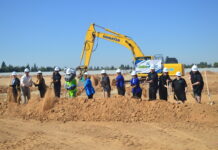
July 10th, 2024 – The Clovis City Council convened on July 1, 2024, to address a range of community issues, including honoring the legacy of Mine Ikeda, updates on local programs, and significant discussions on historic preservation and development impact fees.
The meeting began with a heartfelt tribute to Mine Ikeda, a cherished member of the Clovis community who passed away on June 2nd, just shy of her 100th birthday. Mayor Lynne Ashbeck highlighted Ikeda’s deep connection to Clovis’ history, recounting two touching stories that exemplified her impact.
On December 8, 1941, the day after Pearl Harbor, Mine, then a senior at Clovis High, was alone on the school bus. A young man noticed her isolation and sat with her, holding her hand throughout the day to ensure she felt safe. This act of kindness showed the importance of treating everyone with compassion and understanding.
Another story from the late 1930s emphasized the community’s diversity and solidarity. During World War II, when Mine and her family were interned, their Sikh neighbor tended to their crops and gave them the profits upon their return. Mayor Ashbeck noted, “May we always live like Mine,” celebrating the spirit of kindness and resilience that Ikeda embodied.
Updates from the Clovis Fire Department and Police Department showcased their community support initiatives. The Fire Department has been involved with the Alisa Ann Rich Burn Foundation for over 20 years, while the Police Department’s Cops and Kids Sports Camp fosters positive relationships between youth and law enforcement.
A critical issue discussed at the meeting was the proposed development of a congregate health facility in an established residential neighborhood. However, the proposed location and size have sparked significant concern among local residents.
A retired Clovis Unified teacher, spoke passionately against the facility’s construction in his neighborhood. The former teacher mentioned how 30-40 residents attended a planning commission meeting in June, with nine speaking in opposition for various reasons. The size of the proposed facility—6,000 square feet with 18 beds on a half-acre lot—is a major concern, especially since the neighborhood homes range from 2,100 to 3,400 square feet. He contrasted this with a nearby healthcare facility a few blocks north, which blends into the neighborhood with only six beds on a one-third acre lot.
He also emphasized the inadequacy of the proposed facility’s parking where additional parking would spill over onto Armstrong Avenue, a two-lane street that already experiences bottlenecks during busy hours. He also pointed out the lack of assurance for a sufficient retaining wall to obscure the facility’s daily activities from neighbors and noted that the garbage area is planned to be against a neighbor’s fence.
Another resident echoed those sentiments, stressing that the issue was not the need for the facility but its size and impact on the neighborhood. Residents urged the council to place this item on the August agenda for thorough discussion before any construction begins.
Council members listened attentively to these concerns, assuring residents that their feedback would be taken into serious consideration. This issue will be further addressed in the upcoming August meeting, where additional data and community feedback will be presented.
A portion of the meeting was dedicated to the recommendations from the Historic Preservation Committee. The committee aims to promote and preserve Clovis’ rich historical heritage.
The committee outlined several key recommendations for approval. The first was adjusting the criteria for something to be considered by the Historic Preservation Committee. The committee also suggested that the original one-square-mile area of Clovis (Barstow Ave to the south, Minnewawa Ave to the east, Sierra Ave to the north, and Sunnyside Ave to the east). should be designated as a historic district to protect against unregulated changes. Additionally, they proposed revisiting the 2022 draft ordinance to establish a Historic Preservation Committee formally and including a dedicated element for historic resources in the city’s General Plan, outlining goals, policies, and actions.
During the discussion, humor lightened the room when it was suggested that if City Manager John Holt, upon retirement, took up curling and won the Olympics, his home could be designated a significant landmark. The conversation emphasized the balance between “preservation and progress.”
Council members expressed the importance of securing funding for these preservation efforts. Mayor Ashbeck highlighted the potential for posting signs to mark historic landmarks, ensuring the community’s story is told. Mouanoutoua warned about the risks of underfunding the historic district, urging proactive financial support.
Council members discussed development impact fees. Despite public opposition, the council approved fee increases to address rising construction costs, effective August 12, 2024. Concerns about transparency and fee breakdowns were acknowledged, and further discussion was scheduled for the August 5th meeting.
The council also approved bylaws for the new Clovis Youth Commission, addressed concerns about a proposed 6,000 sq ft healthcare facility in a residential neighborhood, and announced a 3% cost of living increase for executive management employees, effective July 1, 2024.
City Manager John Holt discussed the potential impact of a recent Supreme Court ruling on the city’s code enforcement operations, particularly regarding homelessness.
The Clovis City Council continues to balance preserving the city’s heritage with fostering growth and addressing community needs. The next meeting will further explore these critical issues, ensuring Clovis remains a vibrant and historically rich community.








